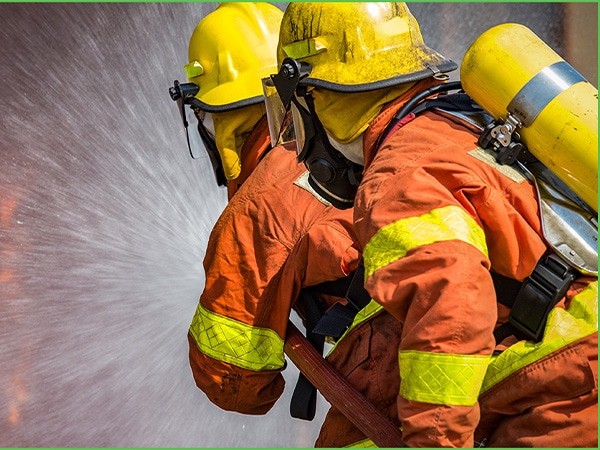Understanding 9/11 Responders’ Prostate Cancer Risk
A recent study found that exposure to World Trade Center dust may alter inflammatory pathways, leading to the progression of prostate cancer.

Tens of thousands of men and women aided in the rescue and recovery efforts following the terrorist attacks on Sept. 11, 2001. While hundreds of these responders died at ground zero, thousands more have since died due to illnesses linked to the attacks.
Exposure to the dust at ground zero – a toxic mix including asbestos, lead, and glass fibers – has been linked to the increased incidence of many health conditions, including several types of cancer. The World Trade Center Health Program, launched in July 2011, provides medical monitoring and treatment for survivors and responders of the 9/11 attacks. To date, there are nearly 93,000 individuals enrolled in this program.
Among enrolled responders, more than 8,000 have a cancer that is attributed to their role in the response to the attacks. Prostate cancer is the second-most covered cancer among these responders.
A recent study published in Molecular Cancer Research, a journal of the American Association for Cancer Research (AACR), aimed to understand why 9/11 responders might be at increased risk of prostate cancer. The study found that inflammatory and immune system-modulatory pathways were altered in animal models and in archived prostate tumor samples of responders exposed to World Trade Center dust.

“Our results suggest that inflammatory mechanisms are activated in the prostate after exposure to World Trade Center dust, which may give rise to chronic inflammation and contribute to prostate cancer progression,” noted co-senior author William Oh, MD, chief of the Division of Hematology and Medical Oncology at the Icahn School of Medicine at Mount Sinai and deputy director at the Tisch Cancer Institute, both in New York.
The researchers started by comparing archived prostate cancer samples taken from 15 World Trade Center responders and 14 unexposed individuals. They found that tumors taken from the responders had an upregulation of genes involved in immune modulation and cell death compared to tumors taken from those who were unexposed. They also found that pro-inflammatory cell types were enriched in responders’ prostate samples compared to unexposed individuals.
Hoping to gain more insight into the issue, the researchers exposed rats to dust that was collected at ground zero within 72 hours of the attacks. These rats were exposed to the dust for two hours for two consecutive days at a dose meant to mimic the amount of dust first responders would have inhaled during the initial three days at ground zero.
Compared to prostates taken from unexposed rats, prostates taken from rats exposed to World Trade Center dust following one day showed an upregulation of pro-inflammatory cell types.

“In our study, both the archived human prostate cancer tissues of 9/11 responders and the prostates of rats experimentally exposed to World Trade Center dust showed an increase in pro-inflammatory cell types,” said co-senior author Emanuela Taioli, MD, PhD, director of the Institute for Translational Epidemiology at the Icahn School of Medicine at Mount Sinai and associate director for population science at the Tisch Cancer Institute. “This finding represents the first mechanistic link between exposure to World Trade Center dust and prostate cancer.”
Environmental Carcinogens
The toxic dust that coated parts of lower Manhattan following 9/11 is an example of an environmental carcinogen. Other examples of carcinogens in our environment include air pollution, high levels of nitrates in drinking water, and asbestos present in older buildings. While many carcinogens in our environment have been identified, others have yet to be fully defined. Further, identifying methods to accurately measure our exposures to such environmental carcinogens is an area of active research.
To address many of these issues, the AACR recently held a conference focusing on Environmental Carcinogenesis: Potential Pathway to Cancer Prevention. Topics of discussion included environmental contributions to human cancers, recent progress in identifying and defining carcinogens, and innovative approaches for measuring carcinogen exposure.
As the conference cochairs explained, important next steps in the field include translating scientific knowledge about these carcinogens to best inform public policy, identifying biomarkers that reflect exposure to environmental carcinogens, and finding ways to stop the development of cancer once one has been exposed to certain carcinogens.